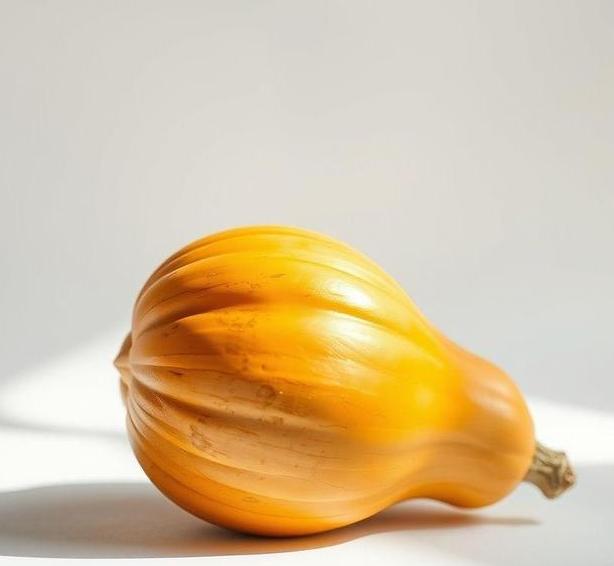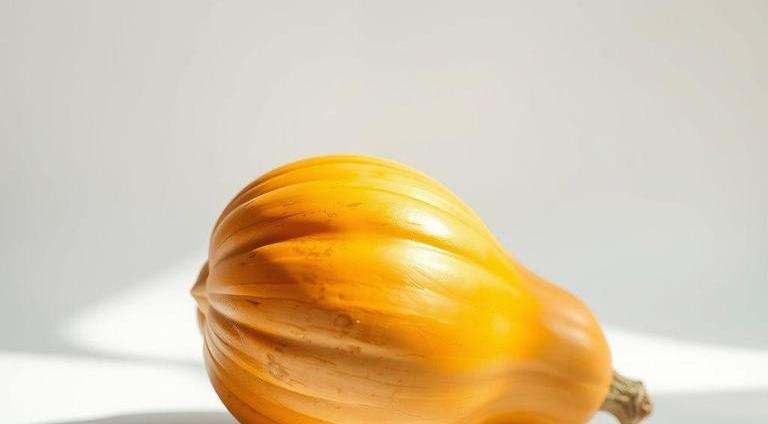Butternut squash is a beloved vegetable that graces many kitchens due to its naturally sweet flavor, vibrant orange hue, and versatility. Whether roasted, pureed into soups, or used in savory stews, it’s a staple in fall and winter cooking. But like all fresh produce, butternut squash can only stay fresh for so long. If you’ve ever wondered how long this hearty vegetable lasts, or if it can spoil, you’re not alone. The good news is that with proper handling, butternut squash can last for a good amount of time-whether it’s whole or cut. But knowing how to tell when it’s gone bad and how to store it properly can make all the difference.
In this guide, we’ll explore whether butternut squash can go bad, how to tell if it has, and provide expert tips on how to extend its shelf life. So, let’s dive in and get you fully prepared for the next time you bring this delightful squash home.
Can Butternut Squash Go Bad?
Yes, butternut squash can absolutely go bad, just like any other produce. However, its longevity depends on how it’s stored and whether it’s whole or cut. Whole butternut squash tends to have a much longer shelf life compared to a peeled or chopped one. The key factor here is moisture and temperature-two elements that can cause the squash to degrade quickly when improperly handled.
- Whole Squash: If left unpeeled and uncut, a butternut squash has a robust natural skin that helps protect it from spoiling. It has a much better chance of lasting longer compared to its cut counterpart.
- Cut or Peeled Squash: Once you start cutting into it, the flesh is exposed to air and moisture, which can accelerate spoilage. Even if stored in the fridge, it will begin to deteriorate faster.
This doesn’t mean it will spoil immediately, but there are certain conditions you need to be mindful of, especially when it comes to storing it.
Shelf Life For Butternut Squash

The shelf life of butternut squash can vary, but if you store it properly, it can last for a significant amount of time. Here’s a breakdown of the shelf life depending on whether it’s whole or cut:
-
Whole Butternut Squash (Unpeeled)
- Pantry Storage: Can last up to 1 to 3 months. Ideally, store it in a cool, dry place like a pantry or cupboard. Avoid putting it in direct sunlight or a hot spot.
- Refrigerator: Storing it in the fridge is typically unnecessary unless you live in a hot climate. It can still last around 2 to 3 months in these conditions but make sure to keep it in a dry, ventilated area.
-
Cut Butternut Squash (Peeled Or Chopped)
- Refrigerator Storage: Once cut, it should be used within 5 to 7 days for optimal freshness. Store it in an airtight container or wrap it tightly in plastic wrap or foil to minimize exposure to moisture.
- Freezer: If you need to store it for longer, consider freezing it. Butternut squash can last up to 6 months in the freezer when properly prepared. Make sure to blanch it before freezing to preserve texture and flavor.
-
Cooked Butternut Squash
- Refrigerator: Leftover cooked squash can be stored in the fridge for up to 5 days.
- Freezer: If you freeze the cooked squash, it should retain its best quality for up to 6 months.
Common Signs Of Spoilage
Knowing the signs of spoilage can save you from consuming a squash that has turned bad. Here are some common indicators that your butternut squash has gone past its prime:
- Soft Spots or Mushy Texture: One of the most obvious signs is a soft, mushy texture on the skin or flesh. If the squash feels squishy or unusually soft in areas, it’s likely spoiled. It should feel firm to the touch, especially around the base.
- Wrinkled or Shriveled Skin: If the skin starts to wrinkle, dry out, or shrivel, the squash is starting to lose its moisture and is probably on its way to spoiling. For whole squash, this could mean it’s past its optimal storage period.
- Discoloration or Black Spots: When you notice darkened, blackened, or discolored spots on the flesh, it means there’s some form of rot or decay setting in. These areas should be discarded, as they could spread to the rest of the squash.
- Foul Odor: A bad smell is one of the clearest signs that your squash has gone bad. Fresh butternut squash has a mild, slightly sweet aroma. If it starts to smell sour, fermented, or otherwise off-putting, it’s time to toss it.
- Mold Growth: If you notice any mold, especially fuzzy, white or greenish patches on the skin or flesh, it’s best to discard the squash. Mold can develop on the skin, particularly if it’s been stored in a humid or overly moist environment.
How To Store Butternut Squash?

Proper storage is crucial to extending the life of your butternut squash. Let’s break it down into the best practices for both whole and cut squash:
For Whole Squash
- Store in a Cool, Dry Place: The ideal spot for a whole butternut squash is in a pantry or cupboard where it can stay cool (but not cold) and dry. Avoid placing it near heat sources like stoves or sunny windows.
- Avoid Plastic Bags: While plastic bags are great for fruits and vegetables that need moisture, they’re a no-go for butternut squash. The lack of ventilation in plastic can trap moisture, leading to mold or rot.
- Check Regularly: Every week or so, check the squash for any signs of soft spots, wrinkling, or discoloration. If you spot any, try to use that squash first before it spoils further.
For Cut Squash
- Wrap or Seal Tightly: Once you’ve cut into the squash, make sure it’s wrapped tightly in plastic wrap or stored in an airtight container. This helps prevent moisture from building up and causing it to go bad too quickly.
- Refrigerate Promptly: Always place cut squash into the fridge as soon as possible. It can remain fresh for 5 to 7 days if stored properly.
- Consider Freezing: If you don’t plan on using the cut squash within a week, freezing is your best bet. Butternut squash can be frozen after peeling and chopping into chunks. Don’t forget to blanch it first by immersing it in boiling water for a couple of minutes, then freezing it in an airtight container or freezer bag.
Expert Tips
- Blanch Before Freezing: Blanching is key to keeping the texture and flavor of frozen butternut squash intact. It slows down the degradation of vitamins and preserves its color. Simply boil chunks for 2-3 minutes, then transfer them to ice water before freezing.
- Cut Into Smaller Pieces Before Storing: If you plan to use butternut squash for soups or stews, consider chopping it into smaller chunks before storing it. It’ll not only make storage easier, but it’ll also save you time when you’re ready to cook.
- Avoid Storing Near Ethylene-Producing Produce: Butternut squash, like other squash and root vegetables, does not like to be stored next to fruits that produce high levels of ethylene gas (such as apples, bananas, and avocados). Ethylene can cause premature ripening or spoilage.
FAQs
How Can I Tell If Butternut Squash Has Gone Bad?
You can tell if butternut squash has gone bad by checking for soft spots, wrinkles, or mold. The skin should be firm and the flesh should not be mushy or discolored. An off or sour smell also indicates spoilage.
How Long Can Butternut Squash Last Before Going Bad?
Uncooked butternut squash can last up to 1-3 months when stored in a cool, dry, and dark place. Once cut, it typically lasts 3-5 days in the fridge.
Does Butternut Squash Spoil Faster If Stored In The Fridge?
Whole butternut squash should not be stored in the fridge because cold temperatures can cause it to spoil faster. It is best kept in a cool, dry pantry. However, once cut, it should be refrigerated to prevent spoilage.
Can Butternut Squash Go Bad In The Freezer?
Yes, butternut squash can be frozen. However, it should be peeled, chopped, and blanched first to preserve its quality. If not prepared properly, it may become mushy when thawed.
What Are The Signs That A Butternut Squash Is Overripe?
Overripe butternut squash will often have a dull, wrinkled skin, and may have soft spots or a slightly fermented smell. The flesh may appear overly soft or watery.
Can Butternut Squash Go Bad After Being Cooked?
Cooked butternut squash will generally last in the refrigerator for about 3-5 days. After this time, it may begin to lose flavor and texture, or develop mold.
How Should I Store Whole Butternut Squash To Make It Last Longer?
Whole butternut squash should be stored in a cool, dry, and dark place such as a pantry or cellar. It should be kept away from direct sunlight and humidity.
Can I Eat Butternut Squash That Is Slightly Soft Or Has A Few Blemishes?
A slightly soft butternut squash is still safe to eat as long as there are no signs of mold or a foul odor. Blemishes can be cut away, but if the squash feels mushy or smells sour, it should be discarded.
How Can I Extend The Shelf Life Of Butternut Squash?
To extend the shelf life, keep the squash in a cool, dry place and avoid refrigerating it until it is cut. For cooked or peeled squash, freezing it is a great option for long-term storage.
What Happens If You Eat Bad Butternut Squash?
Eating spoiled butternut squash can cause food poisoning, with symptoms such as stomach cramps, nausea, and diarrhea. Always check for spoilage signs before consuming.